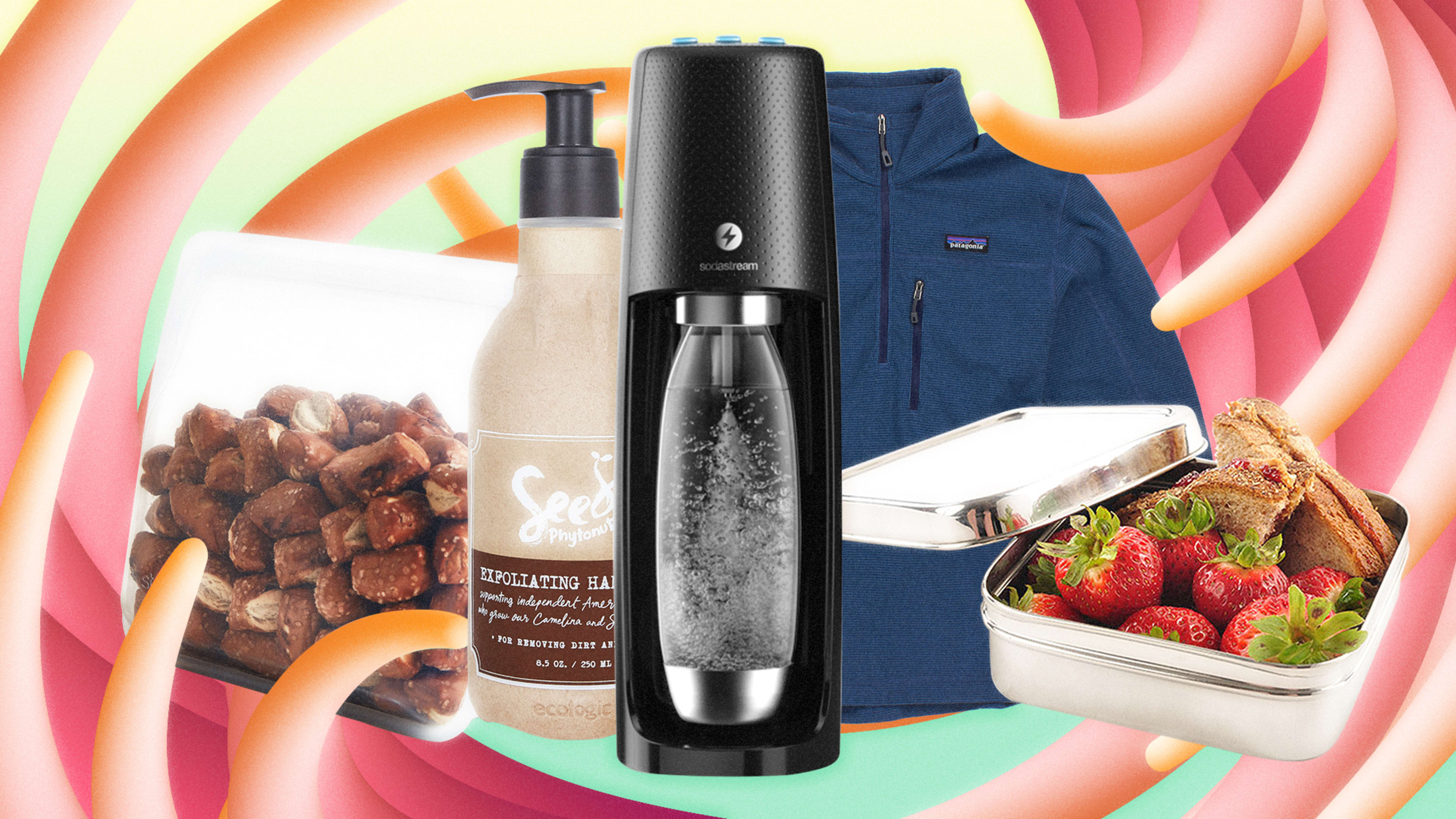Last year may have been the beginning of the end for plastic. It may have taken a while for the average person to wake up to its dangers, but many were shaken into action by the images and videos of plastic’s impact on the natural world that flooded the media in 2018.
A viral video showed a turtle with a straw stuck up its nose. Stories about the Great Pacific Garbage Patch revealed how island-sized trash mounds had collected in the ocean between Hawaii and California. And then there was that National Geographic cover of a plastic bag floating in the water, beneath the scrawled words “Planet or Plastic?” The issue publicized a remarkable statistic: Despite the world’s efforts to recycle, 91% ends up in the trash.
You may already be part of the growing number of people who are trying to ditch plastic. I’ve tried to faithfully bring my reusable Baggu bags ($12) to the grocery store, and carry my own metal straw ($4 for three) with me when I go out to restaurants. I use S’well and BKR bottles ($25 and $45) instead of plastic water bottles. I like to congratulate myself for these small steps, but something weird happened once I began cutting down. I suddenly saw how much other plastic filled my kitchen, bathroom, and closet. I saw it in my toddler’s sippy cups and toys, in the cling film enveloping the meat and produce at the grocery store, and in the contents of my medicine cabinet. How could I ever hope to curb plastic, given that it’s woven into every part of my life?
As I’ve begun to explore more ways to cut down, I’ve realized that the task ahead is not as painful as it might seem. This is partly thanks to a flock of new startups coming up with alternatives to everyday plastic products. I’ve researched many of these brands and tested many of their products to give you a totally achievable, relatively painless, and very convenient guide to get started curbing your plastic use.
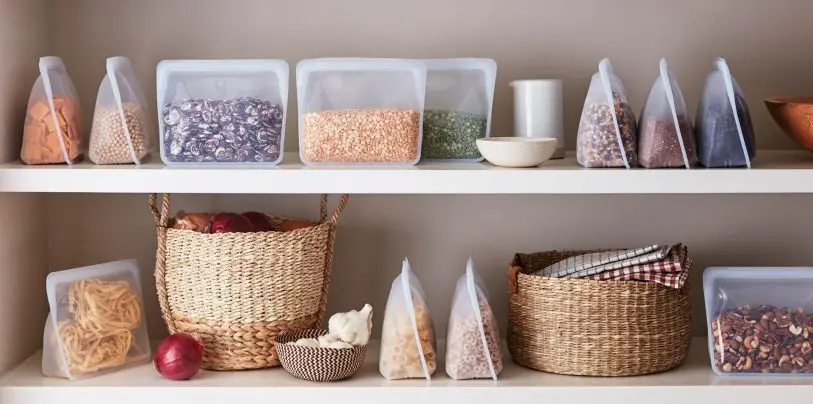
The Kitchen
Let’s tackle the hardest part first: your kitchen. If you look around, you’ll see that most food comes in plastic. It’s the cheapest material on the market, so brands use it to package food and families often use Ziploc bags, Saran wrap, and Tupperware to store it. But there are ways around it.
Buy in bulk: You don’t need to buy prepackaged food. Many grocery stores sell rice, pasta, beans, nuts, flour, and many other ingredients in bulk. And skip the plastic bags offered in-store. You can bring your own containers. Some people like to bring glass or stainless steel jars, but I find them heavy and inconvenient. You also need to figure out how much the jars weigh so that you can correctly tally the weight of the bulk food you’re buying.
Personally, I prefer carrying some lightweight silicone Stasher (starting at $10) bags with me, then store my food in jars when I get home. The company is launching a large, flat-bottomed bag on March 12 that is ideal for bulk buying.
No more packaged fruit: There’s no reason for produce to be packaged in plastic. (I’m looking at you, Trader Joe’s.) Most groceries sell their fruit and vegetables by weight, so just buy your items piecemeal if you can. When you get home, you can give your produce a wash when you’re preparing it. Eco-friendly brand Full Circle has a very handy veggie scrubber ($5) I keep by the sink.
Stock up on reusable containers and wraps: Clear out your Ziploc and Saran wrap drawer, and fill it with reusable versions. I now pack my daughter’s snacks in reusable Lunchskin bags (starting at $5) or paper sandwich bags ($4). They come in cute patterns, which is an extra perk for the toddler set.
I use Abeego food wrap ($15) instead of plastic wrap, and I also have a large number of Pyrex glass food storage containers ($5 to $55) that I use to store all our leftovers.
Replace soap and laundry bottles with glass ones: So what do you do about all your cleaning supplies? This is a tricky one, because almost everything in the cleaning aisle comes in plastic. Here’s my solution: I’ve purchased a set of reusable soap and laundry dispensers ($17) from Grove, an online retail store focusing on eco-friendly home goods. The bottles aren’t just better for the environment, they also make my sink look tidier and more beautiful. (Read more about Grove’s glass detergent dispenser here.) Then I buy dish soap, counter spray, and laundry detergent in bulk packaging. Often this comes in plastic, but you’re still reducing your overall plastic usage–and brands like cleancult are now sell cleaning product refills ($11 for 18 detergent tabs or dishwasher pods) in paper boxes, instead.
For goodness sake’s, get a Soda Stream: Okay, so I have to admit that my family has a minor addiction to carbonated water. Is it weird that my daughter could say the world “sparkling” before she could say the word “milk”? Maybe.
While we recycled all these bottles and cans, I learned recently that a large proportion of recycling gets thrown in a landfill because it is contaminated. A few months ago, we got a Sodastream Fizzi ($90), which comes with refillable glass bottles. Now we never have to run to the store in desperation when our last bit of sparkling water runs out. We can just make it ourselves. And our recycling bin is noticeably more empty because we’re using far less single-use plastic.
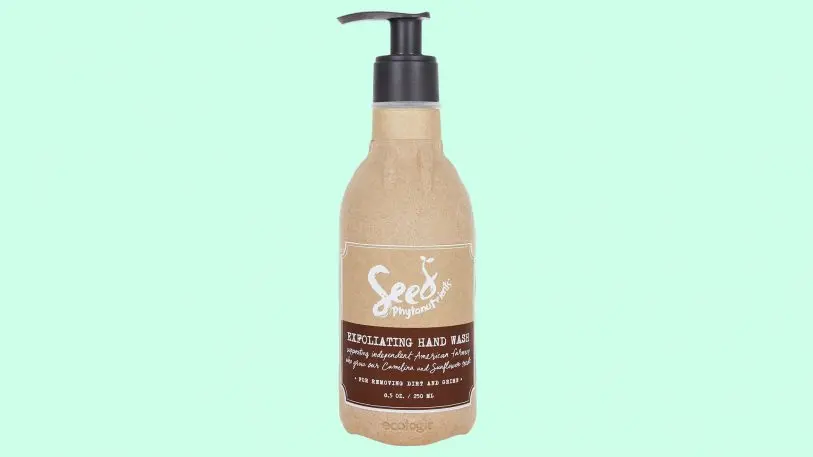
The Bathroom
This is trickier, since most personal care brands rely heavily on plastic in their packaging. Even serious anti-plastic warriors struggle with what products to use, and some have even resorted to making their own toothpaste when they couldn’t find a better solution. Look, I’m a new mom. I struggle to get my requisite eight hours of sleep a night. I’m not going to spend hours making my own toothpaste. This entire exercise is about finding reasonable, manageable ways to curb your plastic. So here are my tips.
Marie Kondo your bathroom: Many of us have way too many products in our showers and makeup drawers. (Mea culpa!) After all, the beauty industry thrives on convincing us that we need dozens of different face creams and body scrubs. But most people don’t have time to spend on elaborate shower routines and skincare regimes, and we fall back on the same set of items: soap, shampoo, conditioner, facial cleanser. The same goes for makeup. Figure out what core products you use, and resist the urge to buy a new eyeshadow palette and lipstick set every season. Finish off whatever extraneous products you have, and then stop buying them.
Find more sustainable alternatives: Now that you have a simple, minimal routine, you have a couple of alternatives when it comes to products. First, you can buy these items in bulk. Alba Botanica, for instance, sells shower gels in 32 fl. oz. bottles ($10), which should last your family six months, at least. Avalon Organics, Alaffia, and Aveda all sell shampoo in large bottles as well.
Second, find brands that are conscious about their packaging. Seed Phytonutrients, for instance, makes a wide range of products including face wash and shampoo for color-treated hair that all come in compostable paper containers with a small plastic core, which minimizes overall plastic consumption by 60%. There are also several startups working to create more sustainable packaging for products, including Myro, which makes reusable deodorant containers. More of these are likely to pop up in the next few months and years, so keep an eye out.
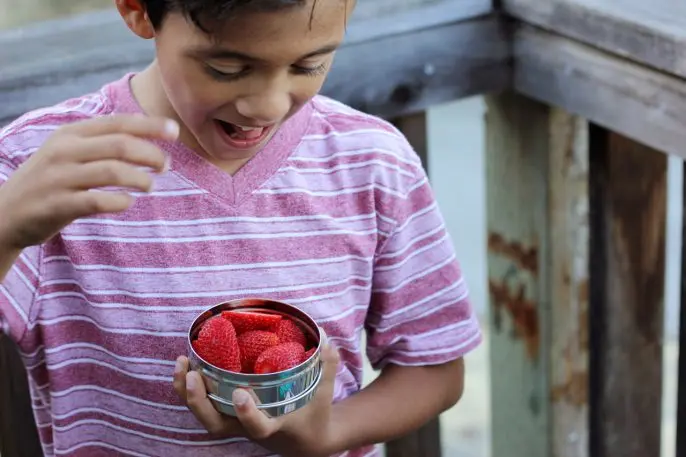
The Nursery
It’s shocking how much environmental waste goes along with having a baby in the modern world. The toy aisles at the store are full of plastic products. Diaper bags and strollers are generally made of plastic. So are most sippy cups, kids’ plates, and silverware, and lunchboxes. It’s hard to know where to start, but here are some things that have worked for me.
Buy less stuff, and invest in books and wood toys: Kids’ toys are often very cheap. When you first see them on the shelf at a store, you likely think that they will provide you hours of peace and quiet, as your kid gets sucked into them. This rarely happens. My daughter loses interest in the item about four hours after we’ve purchased it, and then it sits in her room forever gathering dust.
These days, I focus on buying her books. She often asks us to read the same book over and over again until it’s basically locked in her brain. Over time, the books will continue to be relevant as she learns how to read herself. I’ve also invested in wood toys, including many made by Melissa and Doug. Often, the simple, versatile toys, like wood blocks, are the most engaging because they encourage kids to use their imagination.
Get child-sized wood or stainless steel dinnerware: Most children’s eating utensils are made from plastic because, well, your child is very likely going to throw them on the floor when she doesn’t want to eat her peas. But there are other alternatives. A brand called Ekobo creates kids’ dining sets including cups and silverware out of bamboo fibers that are certified by the Forestry Sustainability Council ($22). EcoLunchBoxes also make stainless steel plates and lunch boxes (starting at $13).
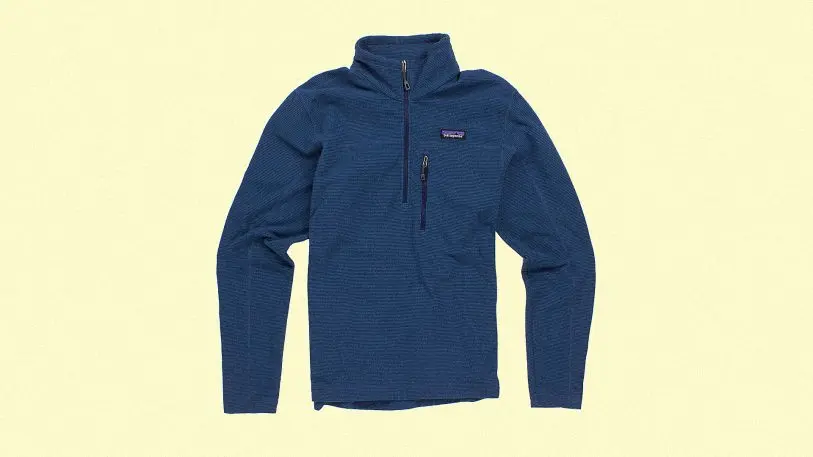
The Closet
Here’s another incredibly difficult part of the house to tackle when it comes to plastic. Plastic-based fibers, like nylon, polyester, and spandex are very cheap to produce, and have been designed to mimic natural materials like cotton and silk. Over the last 50 years, fashion brands have increasingly incorporated these fibers into garments. These synthetic fabrics also have technical features, so they are widely used in outerwear and activewear as well. Since plastic never decomposes, your yoga pants will live forever in a landfill when you’re done with them. Your options when it comes to non-plastic clothes and accessories are limited.
Buy investment pieces: Wool, silk, and cotton are relatively expensive compared to most synthetic counterparts. But well-made clothes made from natural fibers tend to be more durable as well. Many brands that pride themselves on quality try to use natural fibers, but their clothes tend to be a little more expensive. So, in some cases, you might have to adjust how you think about clothes. These days, I think about buying investment pieces that I expect to wear repeatedly for years to come.
Consider two brands that I recently wrote about. Ammara, a women’s shirting brand, makes blouses in neutral colors from silk and cotton, with the goal of creating pieces women will wear for years. Senza Tempo, which literally means “slow pace,” creates women’s workwear pieces that the founder hopes will last women their entire careers. The brand recently launched a washable white silk T-shirt that is designed to be more durable and stain-resistant than your average poly-blend T-shirt ($205).
If you have to buy synthetics, go with recycled plastic: But I get it. Sometimes buying plastic-based clothing is inevitable. The good news is that some brands are switching to recycled plastic. Patagonia has been doing it for years, since it specializes in outdoor clothing, which is heavily dependent on synthetics. Everlane currently sells outerwear made from recycled water bottles, and is working to weed virgin plastic out of its supply chain. Adidas has promised to use entirely recycled plastic by 2024, which is an ambitious target, since almost all of its sneakers and activewear rely heavily on synthetics.
And speaking of shoes, Allbirds has found a way to minimize plastic usage in sneakers (starting at $95) by using wool and bamboo for its uppers. And Rothy’s, a women’s flat brand, creates fashionable women’s shoes ($125) using knit uppers made from recycled water bottles.
Recycle what you don’t need: Finally, think about where your clothes will go when you’re done with them. For years, I sent bundles of clothes to Goodwill, expecting them to find their way to someone who would use them. But in reality, a lot of donated clothes end up in a landfill. Another option is recycling. While clothing recycling is still in its infancy, brands like Patagonia take back old clothes to recycle them, and the T-shirt startup For Days just launched a program where you can send in clothes from any brand to be recycled in exchange for a $4 credit to spend on the site.
So there you have it. While this is far from exhaustive, it’s a start. And thankfully, it’s becoming ever-easier to cut down because there are so many non-plastic alternatives emerging.
Perhaps more importantly, one person changing their behavior can quickly change the norms of their friends and family; the impact of your actions can multiply through your community. Consider a recent Tuesday morning when my husband was trying to pack up some apple slices in a Ziploc bag for my three-year-old to eat in the car. My daughter scolded him sternly for not using a reusable bag. He was appropriately remorseful. He won’t make that mistake again anytime soon.
Recognize your brand’s excellence by applying to this year’s Brands That Matter Awards before the early-rate deadline, May 3.
